Thick hair can feel heavy and big. A medium length cut gives you shape without weighing you down. In this post you’ll find 25 sensational medium length haircuts that make thick hair look polished and wow instantly.
I put this together because thick hair often needs cuts that sit right and move with you. The mid length keeps the bulk in check, adds lift where you want it, and holds its shape through busy days. You won’t have to fight with frizz or lost volume as soon as you step out the door.
If you crave easy mornings, looks that stay put in heat, and styles that feel fresh, this one is for you. If you have thick hair and want ideas that work for work, school, or a special night out, you’ll find something that fits your life here.
What you’ll get is a gallery of 25 solid ideas. Each cut is described with who it fits and how to style it. You’ll also get simple steps, product tips, and quick tweaks for texture, layers, and shine. Think lightweight mousse, a heat protectant, a diffuser, and a good texturizing spray to bring the look to life.
Here is how to use this guide. Start by spotting 2 or 3 styles you like. Then check how they suit your face shape and daily routine. If a cut appeals, ask your stylist to tailor it to your hair’s thickness and volume. A short demo at home with a round brush and a blow dryer can help you master the move.
If you want a fresh look that still feels like you, this is a solid starting point. Use these ideas as your plan, not your final rule. Take notes, save photos, and try a new texture or layer until you find the one that makes your thick hair feel lighter and look instantly styled.
1. Layered Lob with Face-Framing Pieces
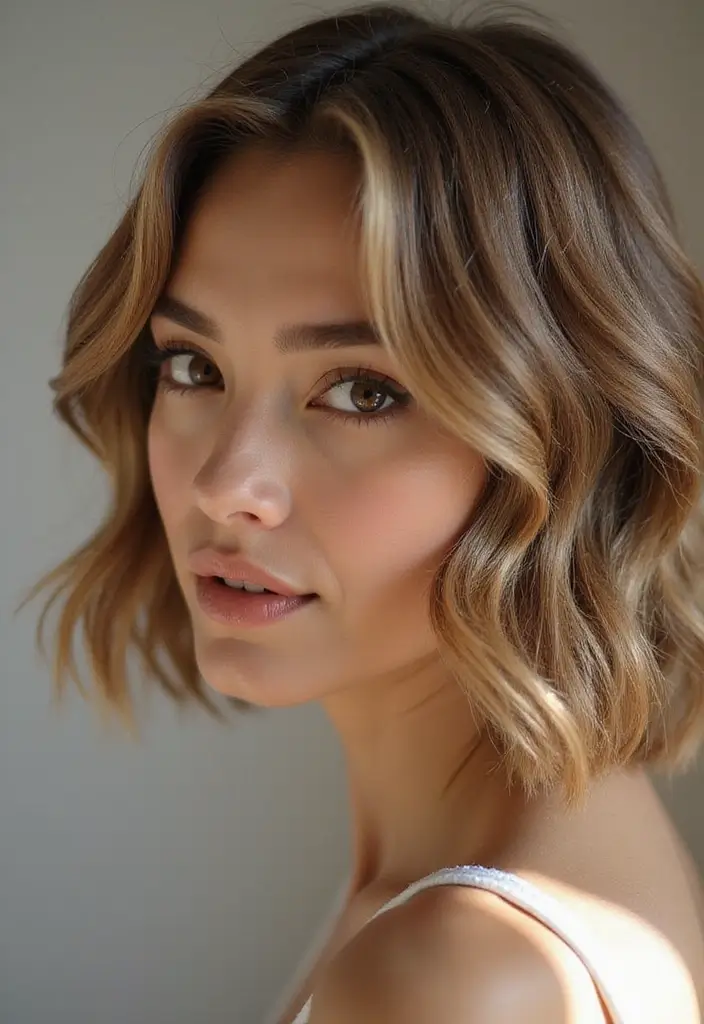
– Layered Lob with Face-Framing Pieces
Feeling weighed down by thick hair? The layered lob helps you win back lift and movement. It trims bulk with gentle layers that avoid a bulky look. Face-framing pieces circle your cheeks and soften your features. Keep length for many looks, whether you wear it straight or add waves.
Color boosts the effect. Try balayage or soft highlights on the layers. Lighter pieces catch the light as you move, giving you a sun-kissed glow without extra heaviness.
Here is why this cut fits thick hair. The layers cut bulk, let air move through, and give your hair a bounce. To style, blow-dry with a round brush to lift the roots, or let it air dry and use a light texturizing spray for natural definition. If you want more polish, a touch of shine serum helps keep ends smooth.
Tips: Start with a volumizing spray at the roots to add bounce. Schedule trims every 6-8 weeks to keep the layers looking fresh.
Bonus: This cut plays well with updos and loose waves, so you can switch looks in minutes.
Next steps: grab a photo, talk with your stylist about length, and try a soft balayage to see the glow. Give it a try this season.
2. Textured Shag Cut
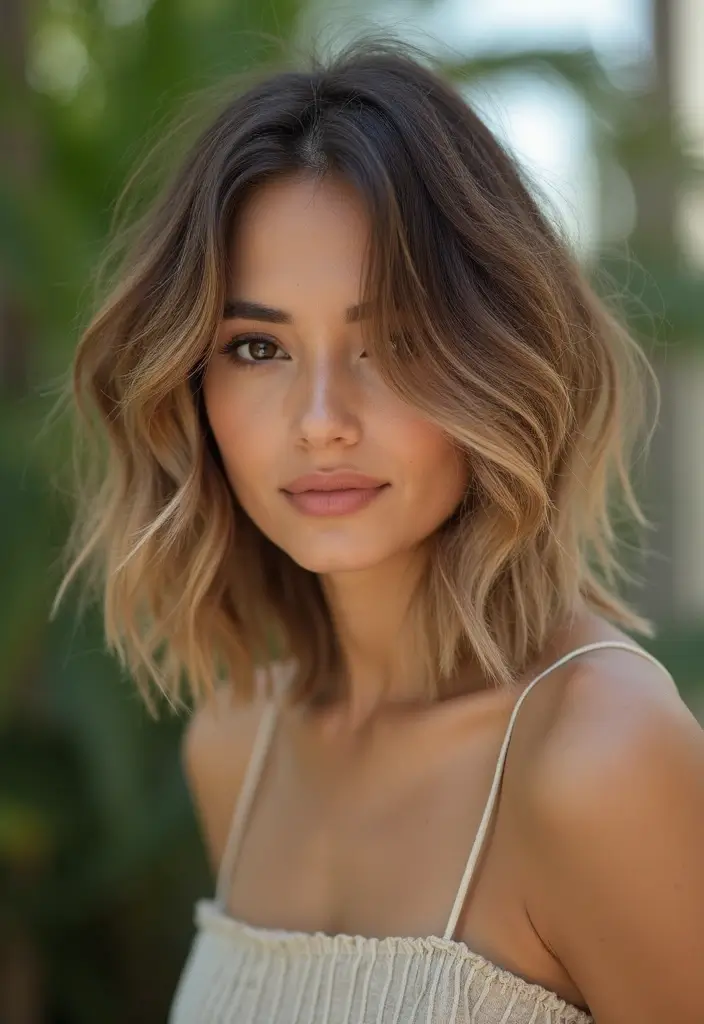
If you have thick hair, you want style that moves with you, not weighs you down. The textured shag cut does that. It uses short, uneven layers and lots of texture. The result is hair that looks lively, not flat.
Why it works for thick hair
– It removes bulk without losing length.
– It creates natural bounce and movement.
– It hides grow-out lines and grows in with your natural shape.
How to wear it for impact
– Style with beachy waves for a laid-back vibe.
– Or slick it back to go polished for events.
– Add a touch of volume at the crown to lift your face.
Insight: Pair this cut with bangs for a trendy frame. It can make your face look younger and fresher.
Recommendation: Apply a texturizing cream or spray to boost the messiness and give your hair that lived-in feel. Use a light hand so you keep control. For extra lift, diffuse while you dry, not just air-dry.
Next steps:
– Show this to your stylist and ask for soft, choppy layers.
– Practice a quick everyday routine: wash, towel dry, product, diffuse for 5–8 minutes.
3. Blunt Cut with Soft Waves

If you want a look that is clean, classy, and easy to wear, try a blunt cut with soft waves. It gives you a sharp edge without looking harsh.
What it is: A blunt cut keeps the ends even with a straight line, while light waves add body and a romantic feel. For thick hair, the straight edge makes a bold frame and the waves soften the line.
Why it works for thick hair: Thick hair has enough volume to hold the blunt shape. The waves break up the solid line so hair moves with you, not fighting you.
How to style at home:
– Start with clean, dry hair and heat protection.
– Use a curling wand or flat iron on 2-3 inch sections.
– Wrap sections away from the face, holding 6-8 seconds.
– Release slowly to form soft waves.
– Repeat until the whole head has gentle waves.
– Run fingers through to blend edges and create movement.
– Finish with a light shine serum.
– Next steps: gather your tools and try this look on a relaxed day.
Tip: A shine serum smooths the edge and tames frizz, keeping the blunt line crisp.
Unique Feature: This cut adapts from casual days to formal events with little effort. It stays easy to reuse.
4. Medium Layered Cut with Bangs

If you have thick hair that weighs you down, you want a cut that keeps volume without looking bulky. The medium layered cut with bangs can do that. It adds texture in the right places, so your hair moves instead of sits heavy.
Here is why it helps thick hair: the layers shed bulk and create air between strands. Bangs frame your face and draw the eye to your features. You can pick curtain bangs for a soft, easy-to-wear look or straight-across bangs for a crisp line.
Next, how to make this style work for you: layers reduce weight, so you get lift at the roots and a lighter feel all over. The bangs keep your eyes in focus, giving you instant charm.
Styling Tip: Use a round brush while you blow-dry. Lift the roots for volume, then smooth the ends with a quick pass of a flat iron for a clean finish.
Consideration: Bangs need regular trims to stay neat. Schedule touch-ups every 3-6 weeks, depending on how fast your hair grows.
Here is your quick plan: ask your stylist to cut several soft layers with longer bangs, then tweak length at home with minor snips. This keeps the style flexible as you grow into it.
Transform your thick hair with a sensational medium layered cut and bangs! This style not only reduces bulk but also adds movement and frames your face beautifully. Embrace the layers, and let your hair do the talking!
5. Asymmetrical Cut
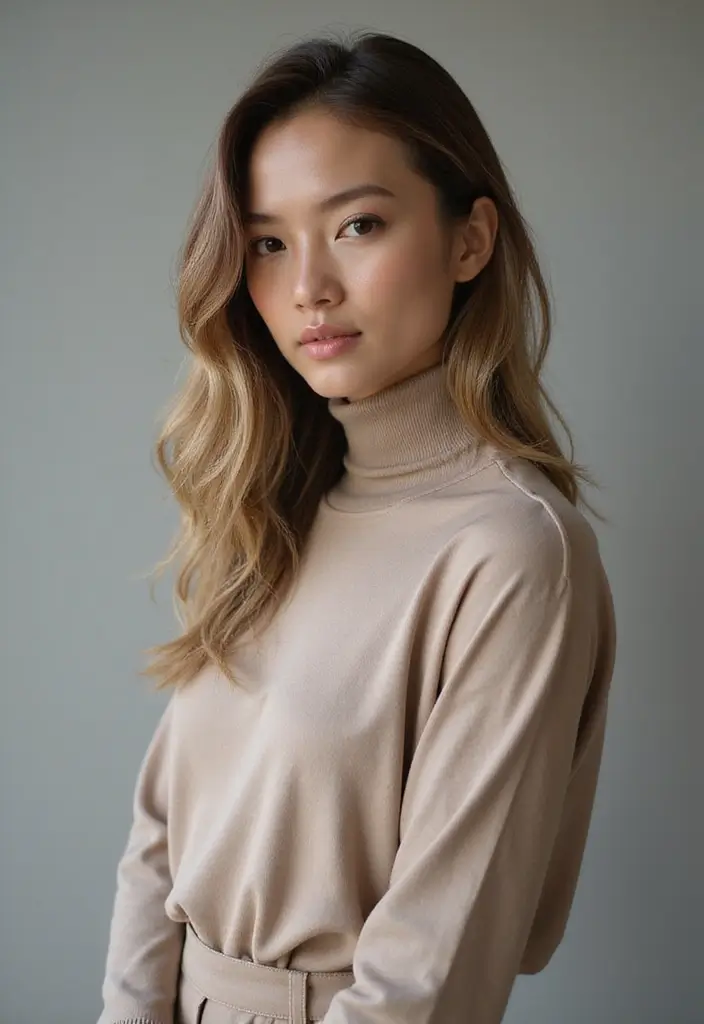
If you want a bold change for medium thick hair, try an asymmetrical cut. It uses a longer front panel and a shorter back. The result is a fresh, edgy shape that still fits a busy life. With thick strands, the uneven lengths show off your natural volume. You get movement that stays lively from day to night. This cut looks playful yet polished.
Trend insight: Many people color the longer front piece. A vivid shade pops against the shorter back and adds drama.
Why it works for thick hair: The extra length at the front creates a frame for your face. Thicker hair holds the shape well, so the cut keeps its edge even after sleep. The back stays compact, which makes it easy to manage.
How to style it: Start with a lightweight mousse. Apply from roots to ends, then blow dry with a round brush to lift the crown. You can roughen the ends with your fingers for texture. Finish with a light spray for hold.
Next steps: try a salon consult to see how the asymmetrical line fits your face. Pair this cut with a simple outfit to let the style shine. Keep color ideas in mind if you want extra impact. If you want, try a few inches longer on the front to soften sharp features. Then, give it a test run and tweak with your stylist.
Dare to be different! An asymmetrical cut for your thick hair adds playful elegance while showcasing your natural volume. Go bold with color to elevate your look even more!
6. Cut with Long Layers
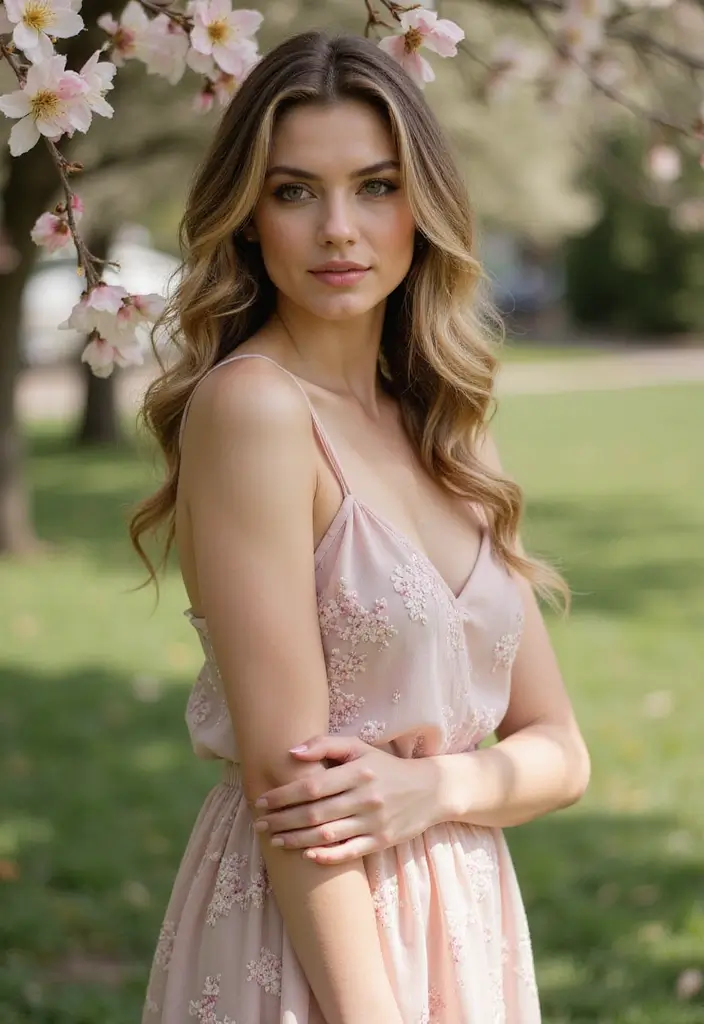
If you want to keep length but cut bulk, this cut can help. Long layers thin the weight of thick hair while you stay at a medium length. The result is more bounce and easy styling.
This approach uses long strands with subtle, even layers throughout. It adds movement without losing the length you love. It looks great on many face shapes and suits both straight styles and soft waves.
Styling Recommendation: If you wear waves, reach for a curl enhancer to define the layers. Apply a small amount, scrunch, and let air dry or diffuse gently. For a straight look, a light smoothing serum keeps the ends neat without weighing down the top.
Maintenance Tip: Get trims every 6 to 8 weeks. Regular cuts keep the layers fresh, prevent heaviness from creeping back, and preserve the balance of weight across the cut.
Here is why you should try it:
– It preserves your length while easing bulk at the mid and lower lengths.
– The layered effect creates natural movement and a flattering silhouette.
– It adapts to many face shapes and hair textures, from sleek to slightly textured.
Next steps: Decide how bold the layers should be. Start the first layer at mid-length for more lift, or keep them closer to the ends for a subtler look. Practice each style a few times to find what feels easiest for you.
7. Layered Bob
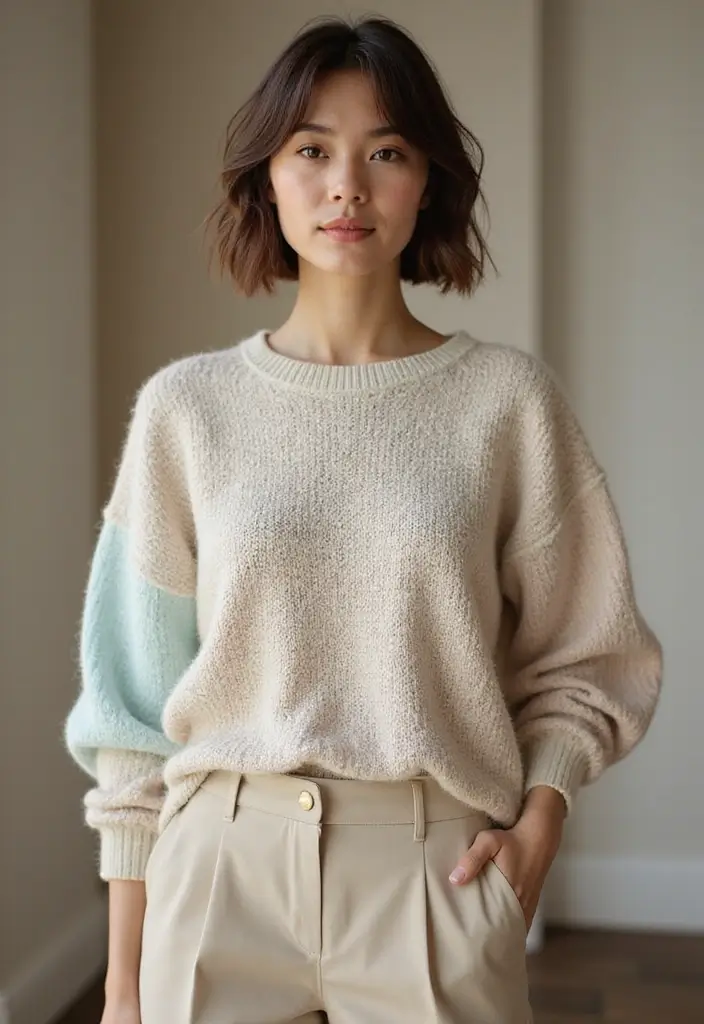
If your hair is thick, a layered bob can bring back balance. It reduces bulk. It keeps length while adding shape. Layers create texture that moves with you. You can wear it straight for a polished look. Or rough with a wave for a casual vibe. Styling tip: A texturizing spray lifts the layers and keeps the look fresh all day. Unique insight: This cut flatters heart-shaped faces by drawing attention to the chin and cheekbones.
Start with clean, damp hair. Apply a lightweight mousse to add grip and volume. Lift the crown as you dry to build shape. Use a round brush for a smooth finish, or let it fall naturally for texture. Finish with a light hold spray or texturizing product to seal the look. Schedule a trim every 6 to 8 weeks to maintain the shape. With the right care, this medium length cut stays chic through seasons.
If you want more lift at the crown, use a root-lifting spray before drying. For a softer finish, use a wide-tooth comb and avoid heavy smoothing. A light shine serum tames frizz and keeps ends sleek. In humid weather, a matte paste helps control flyaways. Ask your stylist for a crisp line at the ends during trims.
8. Messy Waves with a Center Part
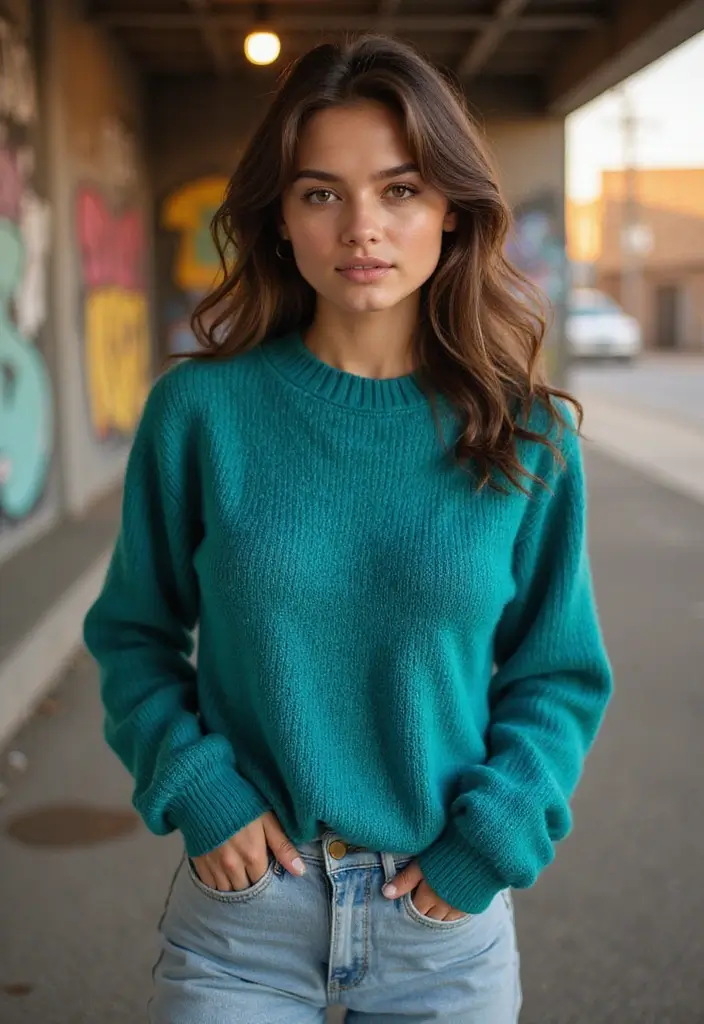
You want a look that is easy to wear and instantly stylish. Thick hair can be hard to tame. Messy waves with a center part hit the right balance of casual and glam. It looks fresh, yet polished enough for work or a night out. The center part adds symmetry and makes your waves stand out. Best of all, it refreshes quickly when you are short on time.
Here is why this works for thick hair:
– Natural texture shines through the mess.
– The center part frames your face and adds balance.
– It stays stylish with little effort once you know the steps.
Let’s break it down so you can try it tonight.
– Prep and protect: wash, condition lightly, towel dry, and apply a heat protectant.
– Add texture: spray sea salt from roots to ends, scrunch, and rough dry with a diffuser or air dry.
– Create waves: twist small sections or use a wand on low heat for a loose bend. For more lift, flip your head and shape with your fingers.
– Finish: run fingers through, lift the roots, and mist with a light shine spray.
Tip: Sea salt spray boosts beachy texture and adds volume.
Consideration: Subtle natural highlights can make the messy look pop and look sun-kissed.
Next steps: adjust the part to suit your face, and keep the look fresh with a quick touch-up spray.
9. Soft Curly Layers

Struggling to find a cut that flatters thick hair? Soft curly layers are a simple choice that adds life without adding work. They bring out your natural texture and give you a bouncy, full look.
It works well for medium length haircuts for thick hair.
These layers remove weight from the mid length and ends. That means your curls lift instead of lying flat.
You get volume that lasts from morning to night. It also helps tame bulk, so your hair feels lighter when you touch it.
You can shape the look to your mood. Want tight definition? Pinch and scrunch as you dry. Prefer a relaxed wave? Let curls stay looser after styling.
Try a side part for a modern twist or a center part for symmetry. The choice changes the vibe with almost no extra work.
Styling Tip:
– Apply a curl cream to damp hair.
– Slide it through with your fingers from roots to ends.
– Then lightly cup and lift sections to boost curl definition.
– Air dry for soft curls, or diffuse on low heat for lift.
Bonus: This cut works for formal and casual days. It adapts to long sleeves, summer breezes, and busy mornings.
Give it a try and see the lift in your mornings.
10. Layered Pixie Cut
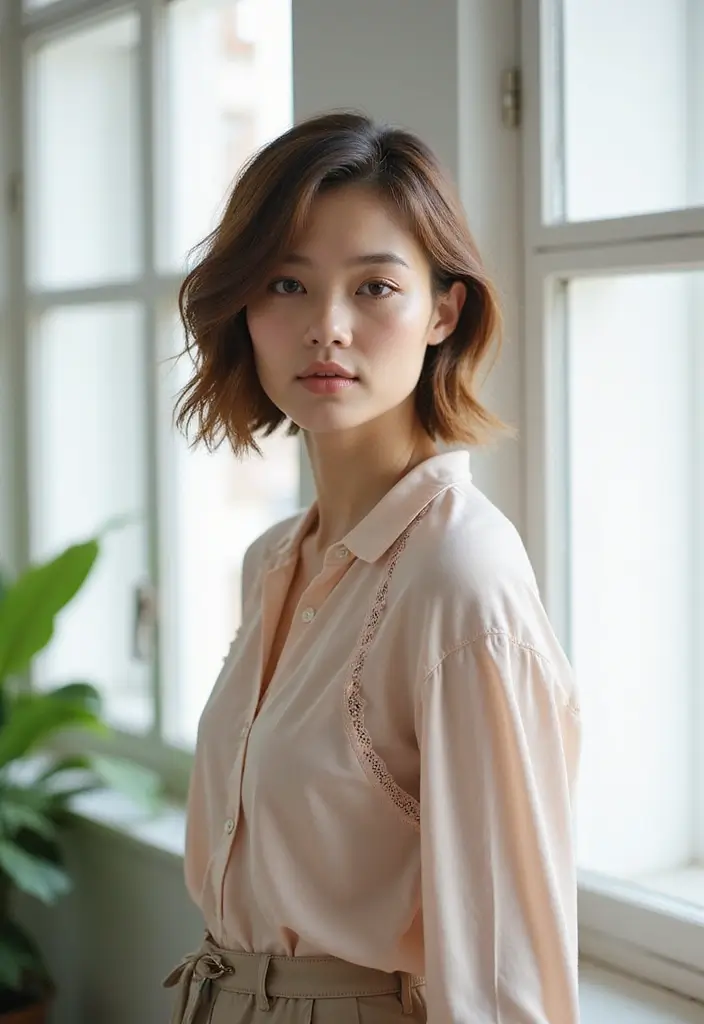
If you have thick hair, it can feel heavy on every cut. A layered pixie cut eases that weight. Layers take bulk away but keep your hair looking full. Texture appears, and your face looks framed. It’s playful yet chic and moves with you.
Here is why it fits thick hair: short layers cut bulk at the crown and sides. The result is lighter lift that lasts. The cut suits many face shapes and can highlight your cheekbones. It stays easy to wear on busy days and makes a bold statement.
Styling Insight: Use a small amount of light gel or cream. Run it through with your fingertips for a soft hold. Let the ends curl a little for texture. A quick blow-dry with a round brush adds lift at the crown.
Consideration: This cut shows off your neck and shoulders with a clean line. It works well for oval or square faces. You can go tight for drama or leave it a touch longer for a softer look.
Next steps: bring photos to your stylist and ask for about 1.5 to 2.5 inches on top and the sides. Schedule trims every 4 to 6 weeks. At home, keep products light and finger-style the hair for best results.
11. Shoulder-Length Curls
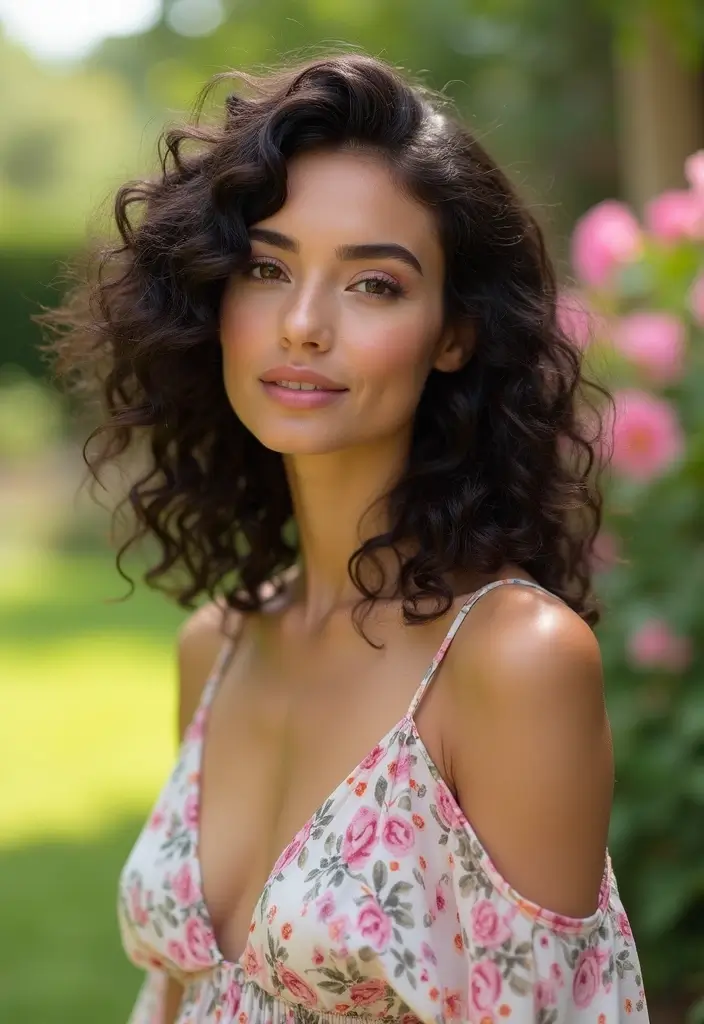
Here is why shoulder-length curls work for thick hair. They add volume without weighing you down and frame your face. You can switch from casual to polished in minutes.
To get this look, start with clean, hydrated hair. Apply a heat protectant. Choose a curling iron with a larger barrel. Wrap sections away from your face for loose, flowing waves. Hold briefly, then release. Let the curls cool before you touch them.
Styling Tip: Keep curls soft. Don’t tighten every strand. A gentle finger comb or a wide-tooth comb keeps texture without frizz.
Maintenance Note: Trim every 6 to 8 weeks to refresh ends. Sleep on a silk or satin pillowcase to reduce friction. Use a light styling product that holds shape but stays flexible.
Here is why this works: shoulder-length curls sit nicely on the shoulders and lift the roots. That balance helps thick hair look full but not bulky. Define the curl pattern with your fingers, not a tight brush, to keep bounce.
Next steps: practice on a weekend. Take a quick photo to check symmetry. If heat feels too strong, lower the setting. With a little practice, shoulder-length curls become your fast, flattering go-to. Give it a week and you will notice the change.
12. Long, Wavy Hairstyle with Layers

Feeling stuck with thick, long hair? You want length but not the weight. A long, wavy hairstyle with layers gives you both. The layers trim the bulk and keep movement. Waves flow with ease, giving a relaxed, beachy vibe.
Here is why it works: layers remove extra heft at the ends, while the top remains full. That balance keeps your hair from looking flat or puffy.
– Layer placement matters. Ask for long, face-framing layers that start around your cheeks and drift down through the mid-length. This shape reduces bulk but keeps length for a dramatic look.
– The waves gain depth. Gentle bends let hair move, so it feels light rather than stiff.
Styling Tip: Use a leave-in conditioner for a soft, silky finish while keeping your waves lively.
Bonus: A subtle ombre or balayage helps highlight the layers and waves, adding depth without adding bulk.
Next steps: Here are practical steps you can try:
– Wash with a hydrating shampoo, then apply a lightweight cream or mousse.
– Detangle with a wide-tooth comb, working through damp hair.
– Diffuse on low heat or air-dry to preserve natural wave pattern.
– Finish with a light texturizing spray at the mid-lengths for grip and separation.
This cut suits most thick hair textures and face shapes. It stays stylish and easy to manage day to day.
Embrace the beauty of layers! A long, wavy hairstyle not only trims the bulk but also brings effortless movement, giving thick hair that sensational flair. Say goodbye to flatness and hello to fabulous waves!
13. Vibrant Color with a Straight Cut

Thick hair loves a straight cut paired with a bright color. The blunt edge creates clean lines that show off shade and reduce bulk at the ends.
Here is why this combo works: a straight cut frames your face with crisp edges, and the color reads clearly against the smooth surface.
Color ideas that suit thick strands include:
– Copper red
– Chocolate brown
– Cobalt blue
– Emerald
– Honey blonde
Pick a shade that matches your skin and vibe. For depth, add a subtle highlight that peeks through the main color.
Next, this look is low-maintenance.
Wash, quick blow-dry, and you’re done.
You can dress it up with a clip or scarf or keep it simple for daily life.
If you keep heat low and use UV protection spray, color stays brighter longer.
Pair the cut with simple accessories to change your look fast.
Styling tip: finish with a gloss serum after drying to keep color bright and hair looking healthy.
Note: color touch-ups every 6–8 weeks keep the hue fresh.
Next steps: talk with your stylist about a blunt cut that hits around the jaw, then choose a shade that complements your eyes.
If you style it with lightweight products, the weight stays balanced and color pops more.
14. Sassy Bob with Undercut

You want a cut that feels bold but stays easy to manage. A sassy bob with an undercut fits that need. It trims weight in thick hair and keeps the style light and lively. The bob hugs the jawline for a modern, confident look.
This combo works well for thick hair. The undercut takes bulk from the crown, while the bob holds its shape. You can wear it sleek for work or tousled for a casual night out.
– Aim for a clean edge for a polished vibe.
– Or soften the edge and add texture through the mid lengths for a relaxed feel.
Tips: Start with a small undercut. You can grow it out later if you want a different look. Use a matte pomade or fiber paste to add texture without shine. A light hold spray at the crown helps keep the style in place all day.
Unique Insight: The big plus is grow-out flexibility. As your hair lengthens, the line can blend into a longer bob or stay sharp with small tweaks.
Here is why it works for thick hair. The undercut reduces bulk, while the bob keeps a steady shape. This balance gives you movement without a heavy feel.
Next steps: bring a photo of your preferred length. Ask your stylist for a blunt, even bottom edge. Schedule trims every 4 to 6 weeks to keep the cut fresh.
15. Braided Medium-Length Hair
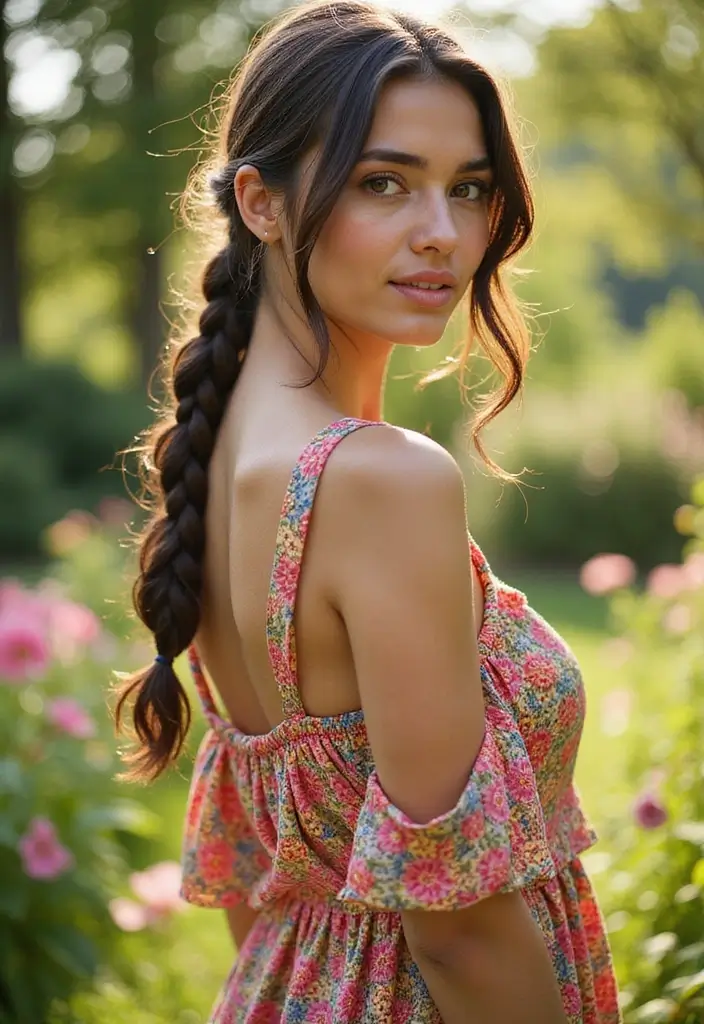
You want a look that works with thick hair and medium length. Braids give you that win every time. Simple plaits or fancy braids add charm with little effort.
Here is why this works for thick hair: braids tame volume, hold shape longer, and stay neat all day.
– Start with clean, dry hair. Brush well so the braid sits flat.
– Add texture. A light texturizing spray or a touch of mousse helps grip and keeps braids from slipping.
– Pick the braid style that fits your day. Try a three-strand plait, a crown beginner French braid, or a loose Dutch braid for fullness.
– Keep the pace steady. Apply even tension so the braid looks smooth.
– Secure with small clear elastics or colored bands to add a small pop.
Tip: Finish with a light mist of shine spray for a tidy look. Accessory idea: Clip in a couple of colorful pins to brighten the style.
– For all-day wear, braid hair before bed and sleep on a silk scarf. It lowers frizz and helps the shape last.
– Try a half-up crown braid or two thin braids that meet at the back for a casual chic vibe.
This approach keeps thick hair controlled and opens up several looks. Try two styles this week and see which feels easiest.
16. Shaggy A-Line Cut

Thick hair can feel heavy and hard to style. The shaggy A-line cut gives you a clean mix of edge and ease. The back is cut short while the front layers stay longer. This shape creates movement that helps your thick locks look lighter and bounce nicely. It frames your face and works with many face shapes.
This cut shines from day to night. You can wear it straight for a polished look or with texture for a casual vibe. For thick hair, the style holds its shape well through the day.
How to style:
– Start with clean damp hair and apply a light texture spray or mousse.
– Use a diffuser or let air dry to bring out texture.
– Lift at the crown as you dry to create soft volume.
– Run a small amount of wax or pomade through the ends to sculpt the tips.
– For a sleek finish, run a touch of hair oil on the mid to ends as needed.
Bonus Tip: Apply a volumizing powder at the roots for extra lift. Tap your fingers to push the powder in and lift the roots for bounce.
Consideration: Plan trims every 6 to 8 weeks to keep the shaggy layers crisp and the cut looking fresh.
17. Soft Romantic Updo

If you wear medium-length hair and want a look that feels soft but stays in place, try a romantic updo. Thick hair loves this style because the volume looks full and elegant. Here is why it works for weddings, parties, and formal events: it frames your face and adds a gentle, timeless touch.
– What you need: a light hairspray, several bobby pins, a small elastic, and a soft brush. A texturizing spray helps grip thick strands without stiffness.
– Here is how to build it: First mist the hair to add grip. Then lift the crown a bit and smooth the top. Twist the side sections toward the back and secure with pins. Let some face-framing pieces fall loose for a romantic frame. If you have extra volume, pin some strands into a gentle puff at the back.
– Here is the key for stay power: place pins across the hair rather than straight in. Use several small pins rather than one big one. Finish with a light spritz.
Tip: Use bobby pins to secure stray pieces while keeping a soft and effortless appearance.
Bonus Insight: Add tiny flowers or decorative pins for a personal touch.
Next steps: practice once before the big day. With a little grip and the right pins, your updo stays soft and stylish from start to finish.
18. Flipped Ends Hairstyle

Want a medium cut that flatters thick hair without looking bulky? The flipped ends hairstyle gives a retro vibe plus a modern twist. It adds bounce and lets the thickness shine through. This cut works for everyday days and for dressier nights. It stays easy to wear with a touch of polish or a laid-back vibe.
Here is why it fits thick hair: the length lets the volume stay balanced, while the flipped tips create movement that avoids a heavy, flat look.
Styling tip: Use a flat iron to flip the ends while keeping the middle soft. Don’t press too hard; you want a natural curve, not a crease.
Modern touch: Add a side part to frame your face and give the style a current look.
Here is how to do it at home.
– Start with clean, towel-dried hair and a light styling mousse. This gives hold without weighing you down.
– Blow-dry with a round brush to lift the roots and push the midlengths toward the ends.
– Glide a flat iron over the last inch of each strand to create a soft flip. Stop there to keep movement and avoid stiffness.
– Finish with a light spray of flexible-hold product or a shine serum on the ends.
Next steps: if you want a softer vibe, flip the ends inward. For a sharper daily look, keep a neat side part and a smooth finish.
19. Choppy Layered Cut
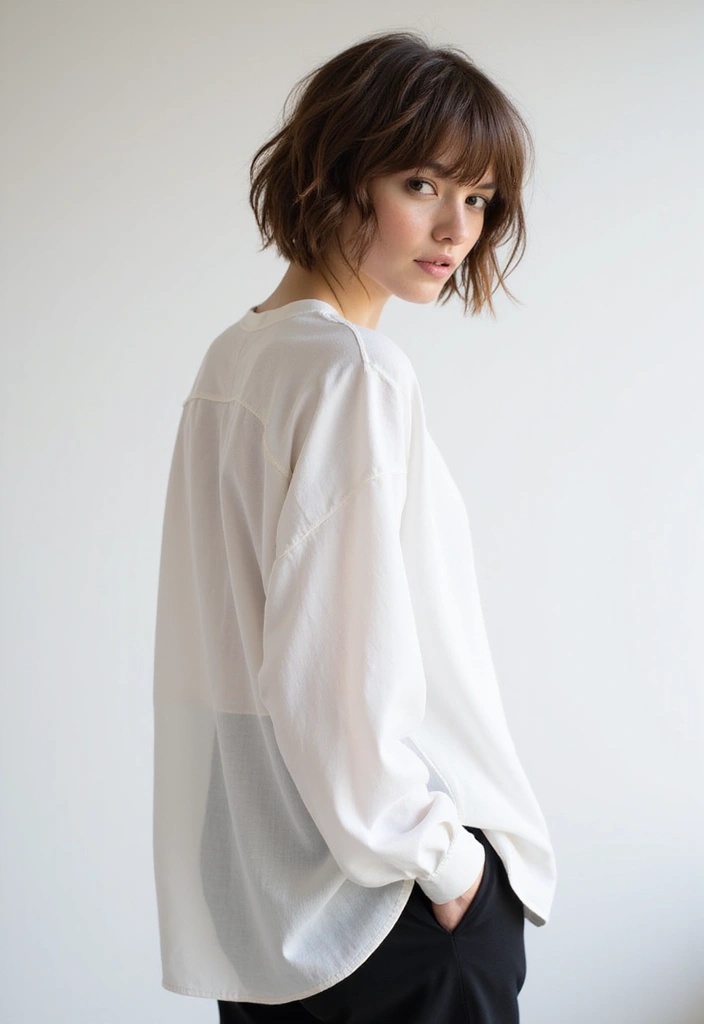
Are you fighting thick hair that looks big and flat at the same time? You want texture that lasts without a heavy feel. The choppy layered cut is a smart choice for a medium length look that breathes life into dense strands. It creates movement without sacrificing length.
Here is why this cut works for thick hair: uneven layers break up bulk, especially at the crown and ends. The result is a soft twist in every section and easier styling. You’ll notice more control when you blow it out or let it air dry. It holds shape longer.
How to wear it, no guesswork needed:
– Straight hair: blow-dry with a round brush to lift the crown and add shine.
– Wavy texture: mist with a texturizing spray, then scrunch and air-dry or use a lightweight diffuser.
– Curly locks: diffuse on low heat or let curls form naturally, then shape with your fingers.
Tip: Use a strong-hold hairspray to lock in curls or waves all day.
Unique Insight: The chopped layers make color pop. Color sits in the edges where light hits, giving a lively look.
Care and upkeep: trim every 6 to 8 weeks. Use a light conditioner to keep ends soft. Always apply a heat protectant before styling.
Next steps: take this guide to your stylist and ask for a choppy layered cut sized for your thick hair.
20. Side-Swept Medium Cut

Looking for a cut that handles thick hair without looking bulky? The side-swept medium cut can be your go-to. It frames your face softly and works on many shapes.
– Flattering on most face shapes
– Lets you keep volume where you want it
– Works smooth and straight or with gentle waves
– Easy to dress up for work or a night out
Here is why it fits real life. The longer length keeps your locks manageable, while the side part opens space around the cheekbones. It adds a touch of elegance without needing a lot of tools. You can switch from a clean, professional look to a relaxed, glam style in minutes.
Styling Tip: Use a round brush while blow-drying to lift the crown. A curling iron or wand lets you add soft waves for a softer vibe.
Next steps for a polished finish. Start by washing and towel-drying. Apply a light leave-in cream to tame frizz. Part your hair to the side, then dry with a low heat setting. Finish with a quick pass of a flat iron or a curling wand for texture. For a neat edge, run a touch of serum along the ends.
Care: Regular trims every 6-8 weeks keep the cut fresh and prevent split ends.
Unlock the beauty of your thick hair with a side-swept medium cut! This flattering style enhances your features while keeping things effortlessly chic for any occasion.
21. Sleek Center-Parted Cut

Want a look that looks polished but easy to wear? The sleek center-parted cut fits thick hair. It keeps length tidy and the middle part brings balance. It reads classy at work and chic at night, with little effort for busy mornings.
Here’s why it works for you. The center part creates symmetry, so your hair reads clean from every angle. The length controls volume and stays simple to manage all day. It’s a flexible base for your natural thickness. It grows with you as your style changes.
– Symmetry that flatters most faces
– A crisp look for work and events
– Easy upkeep between washes
How to style in four steps:
– Start with clean, towel-dried hair.
– Apply heat protectant and a light straightening serum.
– Blow-dry with a paddle brush, keeping the part centered.
– Glide a flat iron from roots to ends for a sleek finish.
Styling Tip: A straightening serum tames frizz and keeps hair smooth.
Unique Insight: A shine spray adds a glossy salon finish.
Next steps: try this on a low-humidity day to see how long it lasts. If you want less edge, tilt the part slightly to the side. For more texture, spray a light texturizing product through mid lengths. This combo stays comfortable in humidity and still looks polished.
22. Feathery Layers with Highlights
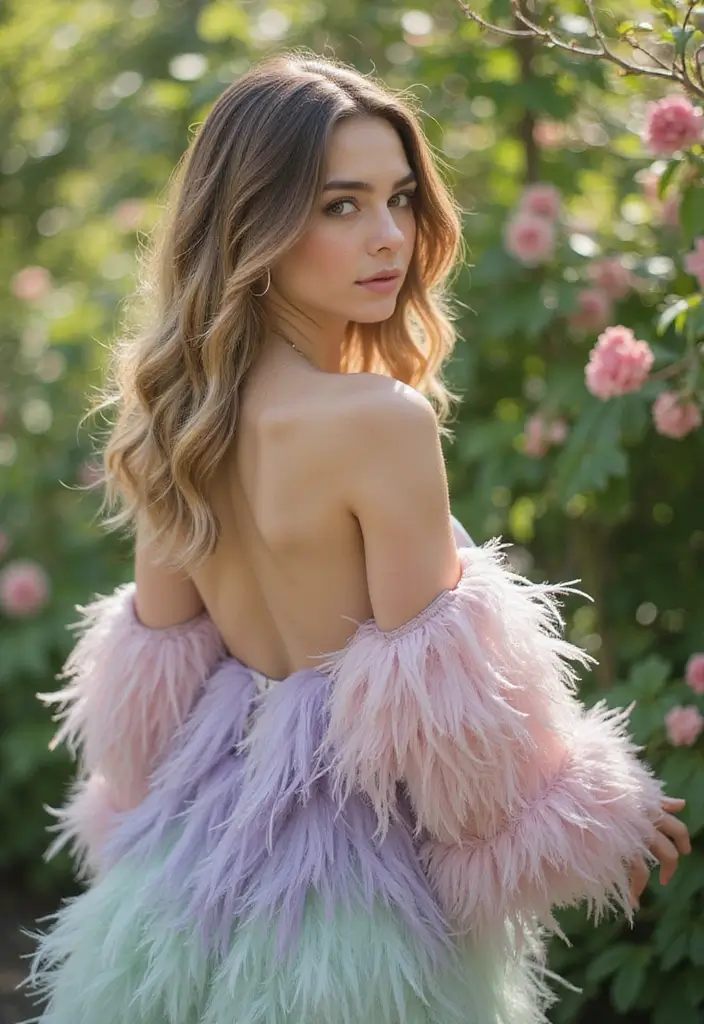
If you want medium length haircuts for thick hair that feel light and move easy, feathery layers are a smart pick. They lighten the bulk at the ends while keeping length. The result is an airy feel that still looks full on top. Highlights bring depth, brightness, and a sunny bounce to the style.
This combo shines with both waves and a straight finish. It catches light and avoids that flat look.
Here is why it helps your thick hair: layers create gentle movement, and highlights add brightness that makes the whole style feel fresh.
– Shape the layers so they skim the shoulders. Too much weight on the crown can make the style look heavy.
– Styling tip: Use a light-hold mousse on damp hair to boost volume without weighing it down.
– Dry with a diffuser to keep texture lively and natural.
– Bonus insight: subtle highlights on the ends brighten the face and keep the look modern.
Next steps: Take this idea to your stylist and ask for soft, see-through layers. Try a few waves at home to test movement and ease of styling.
With time, you will see the balance between lift, shine, and easy upkeep. This look works well in photos and real life.
23. Curled Bob with Volume

You want a cut that adds life to thick hair without weighing it down. A curled bob with volume does just that. Curls lift the crown and the bob stays sleek and modern. It feels playful yet polished.
Here is why it works. Thick hair can look flat on top. The curls create shape and bounce. The bob keeps your length easy to manage while still leaving you with charm.
– Tools: a 1-inch curling iron or hot rollers.
– Prep: apply a volumizing mousse before you style.
– Curl: work in small sections and curl away from your face.
– Set: let curls cool, then gently lift and separate with your fingers.
– Finish: spritz a light hold spray so the look stays flexible.
Styling Tip: Use a volumizing mousse before curling to boost fullness.
Consideration: Regular trims keep the bob sharp and fresh.
Maintenance is simple. Plan a quick trim every 6 to 8 weeks to preserve the shape and prevent split ends.
Next steps? Practice the routine a few times. Adjust the height of the crown lift and the tightness of the curl to fit your face shape. With a little practice, you’ll have a salon-ready look at home.
24. Bohemian Waves with a Headband

If you want a look that suits thick hair and feels easy, try bohemian waves with a headband. It gives a relaxed, boho-chic vibe that stays put all day.
Thick hair makes the waves look full and lively. The headband keeps the front away from your face and adds a playful, carefree touch.
This style works for festivals or casual days. It blends texture with a light, breezy mood you can change with different colors and patterns.
Styling Tip: Use a sea salt spray to texture your hair and create beachy waves before you add the headband.
Consideration: Pick a colorful or patterned headband to show your personality.
How to pull it off in simple steps:
– Start with clean, dry hair so the waves hold better.
– Mist hair with sea salt spray for grip and texture.
– Create waves with a curling wand, or braid sections and sleep on them for a natural bend.
– Gently loosen the waves with your fingers to soften the look.
– Slide the headband into place behind the ears and adjust so it supports the waves.
Next steps and quick refreshes:
– Lightly mist with water and a touch of product to revive waves in the morning.
– Swap in a new headband to refresh your style without a full redo.
25. Bold Undercut with Curly Top

If you want a look that turns heads, try a bold undercut with a curly top. The sides are shaved or cut close, while the top keeps enough length for your curls to shine. The contrast makes the curls stand out and creates a strong shape. This cut feels edgy, yet it stays easy to wear.
This style fits thick hair well. It trims the sides so you don’t carry a heavy weight there. The top remains the focus, so your natural curls look lively. It also works for many face shapes and outfits. The medium length on top gives you room to style without going overboard.
Here is how to get and own it.
– Ask for a short side with a clean line.
– Keep the top longer so curls are visible and bounce.
– Let the curls stay natural and avoid heavy products on the sides.
Daily styling steps
1) Wash and condition with light products.
2) Apply a curl cream on damp hair.
3) Scrunch from tips to roots to energize curls.
4) Use a diffuser on low heat or air dry.
5) Add a light hold product if you want extra control.
Styling Tip: Use a curl defining cream to keep bounce and shape.
Bonus Insight: Try a subtle color on the curls or a lighter tint on the top to add depth.
Conclusion
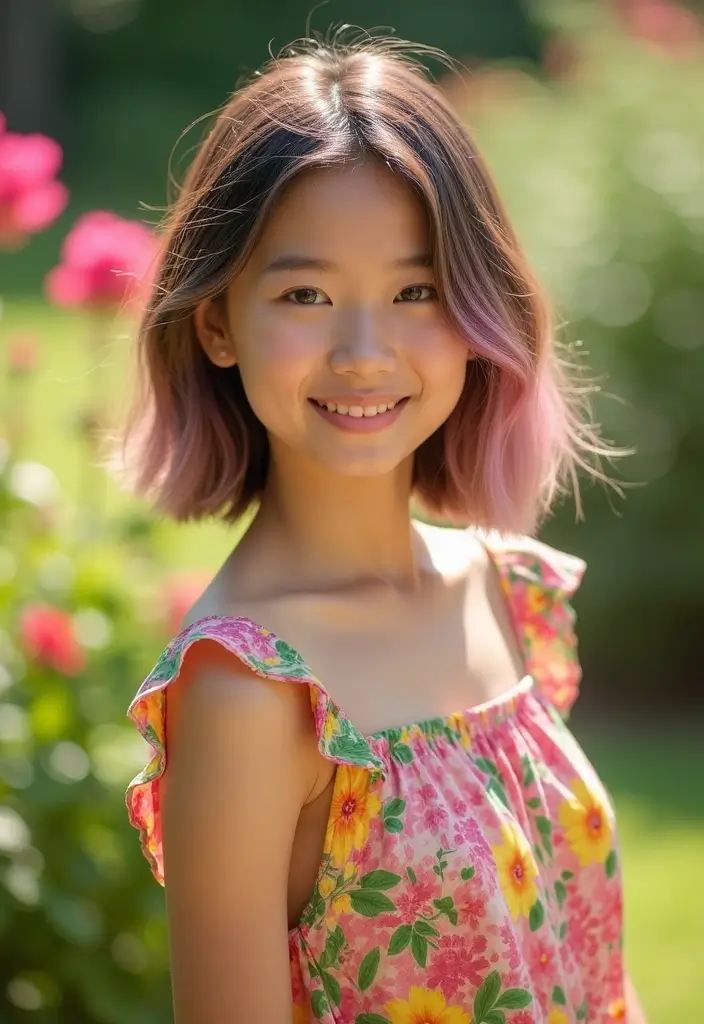
Choosing the right medium length haircut for thick hair can be a game-changer, elevating your overall style and making everyday hair management a breeze. From playful layers to sleek bobs, the options are endless and can be tailored to suit your personality.
Explore these sensational styles, and don’t hesitate to experiment with colors and accessories to truly make each cut your own. Embrace your thick hair and let it shine with these trendy medium-length haircuts!
Frequently Asked Questions
What Are the Best Medium Length Haircuts for Thick Hair?
When it comes to choosing the best medium length haircuts for thick hair, think about styles that reduce bulk while adding shape. Popular options include the layered lob, textured shag cut, and blunt cut with soft waves. These cuts not only flatter but also manage volume effectively, ensuring your thick hair looks polished and lively.
How Can I Style My Thick Hair for a Medium Length Cut?
Styling thick hair with a medium length cut can be fun and versatile! Use texturizing products to enhance movement, and try styles like messy waves or soft curls for an effortless look. For more polished occasions, consider sleek options like the center-parted cut or a blunt bob. Don’t forget to experiment with accessories like headbands to elevate your style!
Do Medium Length Haircuts for Thick Hair Require Special Maintenance?
Absolutely! While medium length haircuts for thick hair can be low maintenance, they do benefit from regular trims to keep those layers fresh and prevent split ends. Additionally, using hydrating shampoos and conditioners can help manage volume and keep your hair looking its best. Incorporating a deep conditioning treatment once a month can also keep your locks healthy and vibrant.
Can Medium Length Haircuts Add Volume to Thick Hair?
Yes, they can! Certain medium length haircuts, especially those with layers, can enhance the natural volume of thick hair without making it feel bulky. Cuts like the choppy layered cut or the feathery layers with highlights are designed to introduce movement and lift, making your thick hair look full and manageable.
What Face Shapes Do Medium Length Haircuts for Thick Hair Suit?
Medium length haircuts for thick hair are incredibly versatile and can flatter most face shapes! For instance, layered bobs are perfect for oval faces, while side-swept cuts can soften angular features. If you have a round face, opt for styles with height, like the asymmetrical cut. The key is to choose cuts that frame your face nicely while managing the volume of your thick hair.
Related Topics
medium length haircuts
thick hair styles
layered haircuts
trendy medium haircuts
volumizing haircuts
face-framing layers
easy maintenance cuts
stylish medium hairstyles
textured shag cut
bold haircut ideas
flattering thick hair
seasonal hairstyle trends













